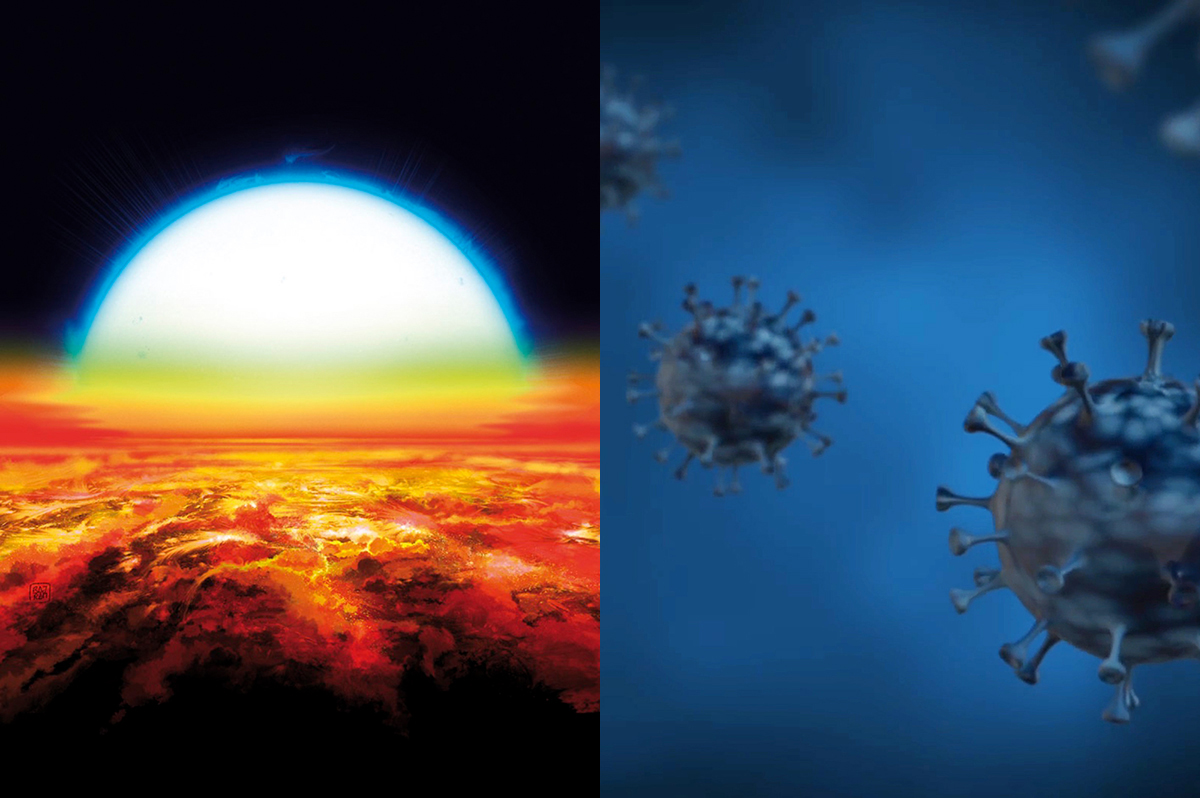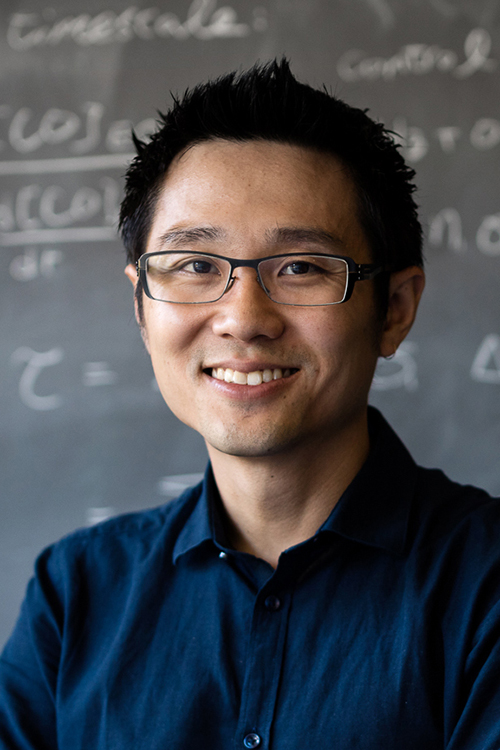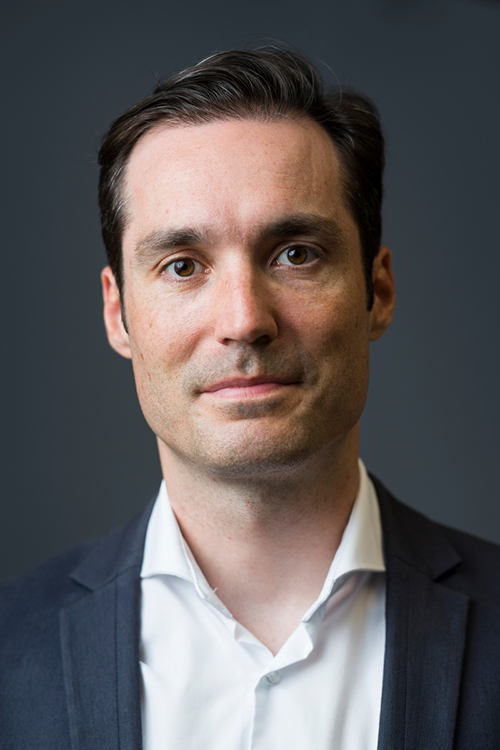What exoplanets have to do with the coronavirus
Astrophysicist Kevin Heng and epidemiologist Christian Althaus have just published a joint study. In an interview with "uniaktuell", the two researchers explain what the spread of infectious diseases such as COVID-19 has to do with exoplanetary chemistry and what they hope to gain from INPUT, a newly founded interfaculty platform.

Astrophysics and epidemiology – how do they go together? The contact between the Center for Space and Habitability CSH and the Institute for Social and Preventive Medicine ISPM was established in 2018, as Kevin Heng, director of CSH, explains: "Oscar Franco, who was the new director at ISPM then, and I had various discussions to explore a possible collaboration. Christian Althaus was also present at one of these meetings. That's how we met." The COVID-19 pandemic then expedited the collaboration between astrophysicist Heng and epidemiologist Althaus to such an extent that they were not only jointly involved in two studies on COVID-19, but they have now institutionalized the cross-faculty collaboration on the new INPUT platform.
Planet and human populations can be described similarly
Astrophysics and epidemiology have little in common at first glance. Kevin Heng admits without hesitation how surprised he was that they got along so well right from the start. Althaus, who has been working at ISPM for 10 years, has a PhD in theoretical biology and says: "Of course I have adopted the epidemiology mindset in the meantime, but thanks to my basic scientific training, I find it easy to exchange ideas with experts in chemistry or physics."
From a methodological point of view, there are certainly overlaps between the two branches of research. Kevin Heng says: "What I find particularly beautiful about the natural sciences is that the language of nature is ultimately that of mathematics. Because our mathematical equations describe how nature works." For example, Kevin Heng has found that the mathematical equations describing the chemical processes in the atmosphere of exoplanets are similar to those used to describe the transmission of infectious diseases. Christian Althaus adds: "In astrophysics, for example, simulation models are used to investigate how molecules on distant planets react with each other and form compounds. We use a very similar methodology based on the same mathematical principles in epidemiology to investigate how infectious diseases are transmitted."
However, the two research areas are similar in other respects as well. "In astronomy, we look at large collections, so-called populations, of objects in the sky. They can be populations of galaxies, stars or planets." Statements about these populations are then made at statistical level. And in epidemiology too, data is considered at population level, and evaluated statistically. "So you could say that we use the same tools of statistical analysis and modeling to understand both celestial objects and human health," says Kevin Heng.
Bundling of expertise in handling large amounts of data
In both astrophysics and epidemiology, researchers have to deal with an enormous amount of data. The collaboration between CSH and ISPM has now been institutionalized and the INPUT platform founded to bundle expertise in this field and to use synergies. INPUT stands for "Interfaculty Platform for Data and Computational Science". The platform is managed by Christian Althaus. He says: "We are already working on current projects, but we really want to grow as a platform and cooperate with other institutes and faculties. After all, many branches of research work with large amounts of data and model-based simulations." Kevin Heng adds: "The spirit of the platform is to look for different fields of research which at first glance do not appear to have much in common, but which show a close similarity in the application of modelling and statistics." For example, David Ginsbourger from the Institute for Mathematical Statistics and Insurance (IMSV) is already on board with INPUT.
As Althaus explains, researchers from the University of Bern have already been able to make an important contribution to understanding the pandemic this year. "And now I hope that with INPUT we will be able to work on other topics beyond infectious diseases that are of great importance today on a global level, such as "planetary health", i.e. the state of health of human civilization and its environment in terms of global coexistence, ecology and climate," Althaus continues. This requires a comprehensive understanding of a large amount of data or computer simulations that are used to model complex systems. "We want to gain an understanding of the pressing issues of the future so that the right answers can be found," Althaus concludes.
About the two studies mentioned in the article
|
An alternating cycle of containment and easing measures in the context of the COVID-19 pandemic could provide a pragmatic solution, particularly in developing countries, to avoid overburdening healthcare systems, while at the same time not placing too great a burden on the economy and society. This was shown by an international study with significant participation by Christian Althaus. Kevin Heng did the computer modelling of different scenarios for this study. This modelling of the spread of COVID-19 piqued Kevin Heng's curiosity and he investigated the epidemiological SEIR model's mathematical equations further. He found that these equations are very similar to the system of equations used in astrophysics to study the atmospheric chemistry of exoplanets. Instead of following how atoms combine to form molecules, the SEIR model can be used to illustrate how humans go through the different stages of a disease. Kevin Heng shows in the study, which he published together with Christian Althaus, that the curves that represent this process have a universal shape. Publication details:Chowdhury R, et al.: Dynamic interventions to control COVID-19 pandemic: a multivariate prediction modelling study comparing 16 worldwide countries. European Journal of Epidemiology 2020. https://link.springer.com/article/10.1007/s10654-020-00649-w Kevin Heng, Christian Althaus: The approximately universal shapes of epidemic curves in the Susceptible-Exposed-Infectious-Recovered (SEIR) model. Nature Scientific Reports. |
About the individuals
Kevin Heng
Kevin Heng is Professor of Astrophysics and has been Director of the Center for Space and Habitability (CSH) at the University of Bern since 2016. He studied physics and astrophysics at the National University of Singapore and at the University of Colorado in Boulder. In 2007 he received his PhD from the JILA Research Institute and the University of Colorado at Boulder. Other posts were Princeton University and ETH Zurich before he took up a tenure-track assistant professorship at the University of Bern in 2013. Kevin Heng's main research interest is the atmospheres of exoplanets. He is a member of the Core Science Team for the CHEOPS mission led by the University of Bern and of the National Centre of Competence in Research NCCR PlanetS, which the University of Bern is leading together with the University of Geneva.
Contact:
Prof. Dr. Kevin Heng
Center for Space and Habitability (CSH)
Telephone: +41 31 631 59 18
Email: kevin.heng@csh.unibe.ch
On Twitter you can find him under @KevinHeng1
Christian Althaus
After studying biology and working as a research assistant at ETH Zurich, Christian Althaus received his doctorate in theoretical biology and bioinformatics from 2005 to 2009 at the University of Utrecht. Since 2009 he has been working at the Institute for Social and Preventive Medicine ISPM at the University of Bern, currently as head of the Interfaculty Platform for Data and Computational Science INPUT. In 2017 he qualified as a university lecturer at the University of Bern medical faculty in the field of epidemiology of infectious diseases. In the course of the COVID-19 pandemic, Christian Althaus has gained great media attention as an expert on the subject. He is a member of the Swiss National COVID-19 Science Task Force, which advises the authorities.
Contact:
PD Dr. Christian Althaus
Institute of Social and Preventive Medicine(ISPM)
Direct line: +41 31 631 56 71
Email: christian.althaus@ispm.unibe.ch
On Twitter you can find him under @C_Althaus
On Twitter you can find the platform INPUT under @INPUTBern
About the author
Brigit Bucher is Head of Media Relations and the "Space" representative at the University of Bern Communication & Marketing Department.

